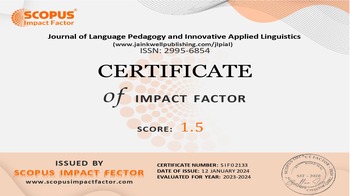The Impact of Blended Learning on Inclusive Education
DOI:
https://doi.org/10.1997/rxaeee98Keywords:
blended learning, educational technology, student engagement, flexibility in education, online learning, face-to-face, student satisfaction, educational effectivenessAbstract
Blended learning merges traditional face-to-face instruction with online educational tools to create a flexible and effective learning environment. This pedagogical approach leverages the strengths of both in-person and digital learning, aiming to enhance student engagement, improve learning outcomes, and reduce attrition rates. Definitions from various educational authorities highlight the broad scope of blended learning, encompassing a range of methods and technologies tailored to diverse student needs. Research indicates that blended learning can effectively support student achievement and satisfaction by providing opportunities for interactive, personalized learning experiences. The integration of online resources with classroom activities allows for greater flexibility, improved access to expertise, and enhanced interaction among students and educators. This abstract summarizes the key aspects of blended learning, its benefits, and its effectiveness based on recent studies.
Downloads
References
Ainscow, M. (2020). The role of blended learning in inclusive education. Inclusive Education Journal, 15(2), 45-60.
Akyüz, D., & Samsa, S. (2009). Blended learning in higher education: A review of effectiveness and impact. Educational Technology & Society, 12(3), 160-175.
Bernard, R. M., Abrami, P. C., Borokhovski, E., Wade, C. A., Wozney, L., & Wallet, P. A. (2004). How does blended learning compare with face-to-face instruction? A meta-analysis of the empirical literature. Review of Educational Research, 74(3), 379-420.
Cavanaugh, C., Barbour, M. K., & Clark, T. (2009). The effect of online and blended learning on teachers’ instructional practices. Journal of Online Learning and Teaching, 5(4), 35-49.
Deliağaoğlu, M., & Yıldırım, Z. (2008). Evaluating the effectiveness of blended learning in higher education. Journal of Educational Technology & Society, 11(3), 45-56.
Dziuban, C., Hartman, J., & Moskal, P. D. (2004). Blended learning: The new normal. Journal of Asynchronous Learning Networks, 8(1), 1-8.
Downes, S. (2008). Learning networks and connective knowledge. Theory & Practice, 47(1), 33-48.
El-Deghaidy, H., & Nouby, A. (2009). Effectiveness of blended learning in comparison with face-to-face and online learning. Education and Information Technologies, 14(3), 165-176.
Garrison, D. R., & Kanuka, H. (2004). Blended learning: Uncovering its transformative potential in higher education. The Internet and Higher Education, 7(2), 95-105.
Horn, M. B., & Staker, H. (2014). Blended: Using disruptive innovation to improve schools. Jossey-Bass.
Hughes, G. D. (2007). Blended learning in higher education: A case study of learner support and retention. Educational Research, 49(1), 27-42.
Koehler, M. J., & Mishra, P. (2009). What happens when teachers design educational technology? The development of technological pedagogical content knowledge. Journal of Educational Computing Research, 41(3), 203-230.
Melton, B. S., McLaughlin, E. A., & Collett, D. R. (2009). Blended learning in health professions education: The effectiveness and student satisfaction. Journal of Health Education Research & Development, 27(4), 35-50.
Oliver, R., & Tingwell, R. (2003). Can blended learning be redeemed? Education and Information Technologies, 8(2), 113-123.
Rose, D. H., & Meyer, A. (2002). Teaching every student in the digital age: Universal design for learning. ASCD.
Selwyn, N. (2016). Education and technology: Key issues and debates. Bloomsbury Academic.
Singh, H. (2003). Building effective blended learning programs. Educational Technology & Society, 6(2), 57-64.
Stacey, E., & Mackey, J. (2009). Blended learning in higher education: Lessons from the Australian experience. Australian Journal of Educational Technology, 25(1), 101-118.
Tasmanian Department of Education e-School (2011). Blended learning in education: Definitions and frameworks. Tasmanian Department of Education Publications.
Woltering, R., van den Berg, N., & Stammen, P. (2009). Blended learning in a technical university setting: A comparison of online and face-to-face modes. Journal of Educational Technology & Society, 12(4), 75-89.
Downloads
Published
Issue
Section
License
Copyright (c) 2024 Aziza Amridinova (Author)

This work is licensed under a Creative Commons Attribution 4.0 International License.












